History has made the best board games for two players indisputable. Yes, many classic board games fit the bill — backgammon, checkers, chess, go, mancala, and shogi are only some examples. However, there are also many board games for two players that are more modern, like Guess Who? and Battleship. Games like this can sometimes be underrated or underrepresented because party games — such as Cards Against Humanity — that are open to many players are often more well-known and well-loved.
For tiny households or couples, two-player board games can be life-changing. Imagine having board games that you can’t play unless people come over — it would be annoying and honestly something that would put someone off collecting board games. While party games are definitely important and will always have their place on every board game shelf, a few two-player games — hopefully including one cooperative one — are needed to complete every shelf like this. Whether you're ready to do some serious strategizing or just looking to pass the time, you won't regret checking up our roundup of the best board games out there right now. From Jalpur to Blockbuster and Chill to Monopoly Rivals Edition, you will find yourself spoilt for choice, though even so, you can still dip your toes into each one of these listings. Most board game enthusiasts don’t prioritize two-player games when it comes to trying them out or purchasing them for their game shelf. It likely has something to do with how to make game nights easier to manage. After all, most people would agree that games open to as many players as possible would be more enjoyable — not to mention more inclusive. Games like Cards Against Humanity are popular because of this way of thinking.
However, games should not just be about satisfying the most number of people. For some game enthusiasts, enjoying is more about game quality and uniqueness of gameplay. Some types of gameplay are best served by a two-player framework, as there is potentially greater intimacy in a board game made for only two players versus a board game designed for more than two players.
Codenames: Duet may not have the depth as a Risk-type board game. However, it is no less thrilling and fun to play.
-
Blockbuster and Chill
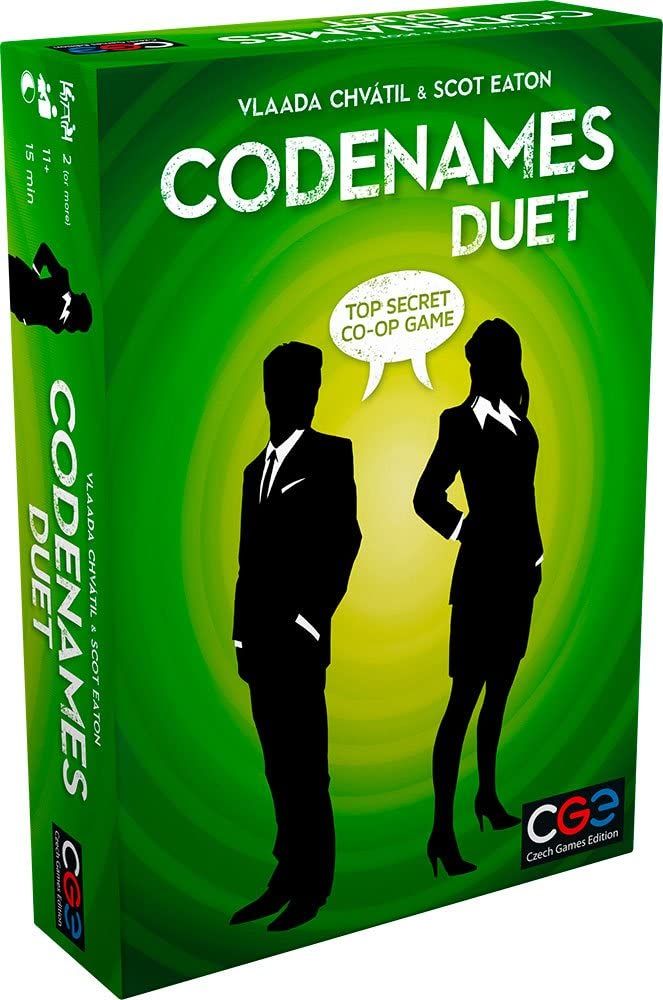
Codenames: Duet
Codenames: Duet, based on the original board game Codenames, is a great option as a board game for two players (or more!). Blending cooperative elements with nailbiting moments, Codenames: Duet perfectly strings together a fantastic experience for two players, with one player acting as the game’s agent and the other acting as the agent’s eyes and ears.
Using cards on which are displayed words, one player communicates with the other to prompt them to help solve the puzzle, which is generally of varying difficulty. It’s a fantastic take on the original Codenames, which is less cooperative than Codenames: Duet, and includes new words and assassins—enough that it feels like a whole new game outside of Codenames.
Codenames: Duet, impressively, is a game where, as soon as you finish one game, you will instantly want to start another. Each lasts about 15 minutes, and as the game can get very fun and challenging, it can be hard to resist the urge to move on to another game. Add in the fact that it is of great value, and Codenames: Duet is quite easily one of the best board games for two players.
- Type of Game
- Card
- Age Recommendation
- 11+
- Game Duration
- 15 minutes
- Brand
- CGE Czech Games Edition
- What's Included
- Cards, map
- Cooperative element is fun
- Great value
- Original concept
- Campaign is great
- Short
Monopoly Rivals Edition doesn’t break any ground, but it is a perfect option for two players wanting solid Monopoly action.
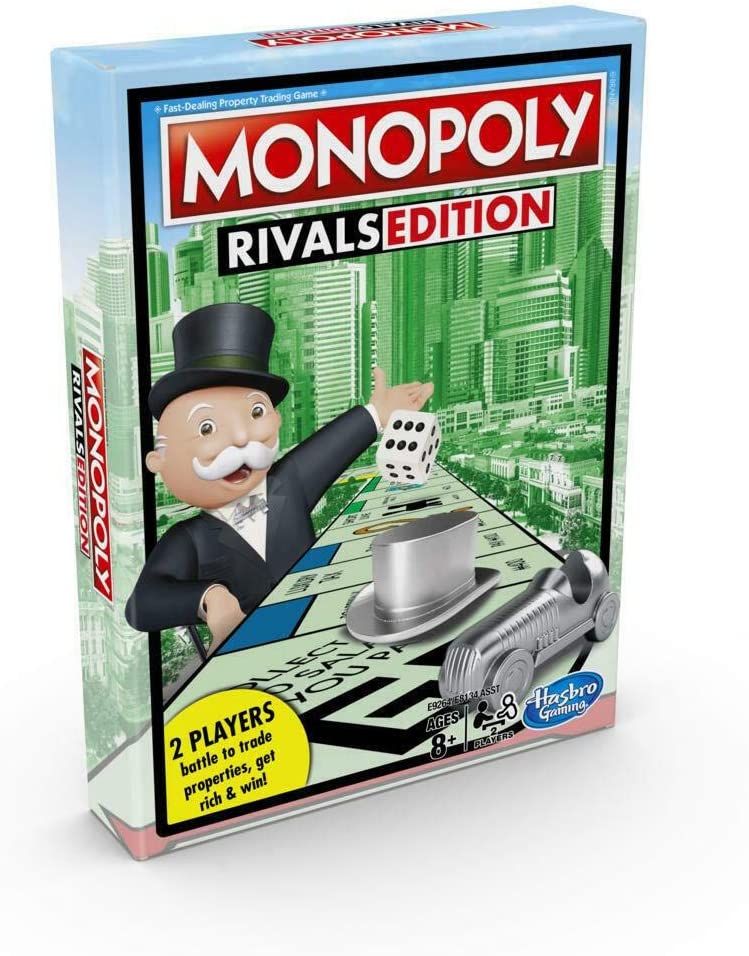
Monopoly Rivals Edition
Monopoly RIvals Edition is a great option for two players for one reason, and one reason alone; it is a much faster version of Monopoly. As Monopoly takes its sweet time when 3-6 or more players are vying for best real estate mogul, Monopoly Rivals Edition comes in and says, “enough of that.” Indeed, this edition is branded as perfect for two players, and that is pitch-perfect branding as it is a solid option for two players looking to pick up and play.
By forgoing a lot of the negotiation elements of standard Monopoly, and instead trading it for rapid rent-gathering and estate-buying, the game becomes 10x quicker, which is much appreciated. The less patient among us will especially appreciate that. Plus, when you’ve got family members about who want to get their facetime with you, Monopoly Rivals Edition allows you more than ample opportunities to speak with them once you wrap up the relatively short game.
Indeed, Monopoly Rivals Edition can reportedly take as little as 15 minutes, or as long as an hour, depending on the speed of the players. The former timing might specifically apply to either more seasoned players or matches that are fairly lopsided in skill level.
- Type of Game
- Money/Real Estate
- Age Recommendation
- 8+
- Game Duration
- 1 hour
- Brand
- Monopoly
- What's Included
- Board, fake money, cards, pieces of fake real estate, avatars
- Fast version is appreciated compared to more sluggish original
- Essence of Monopoly is kept intact
- 100% perfect for two players
- Great for spouses
- Missing some appreciated complexities
However, some consumers assert that production value can’t replace innate replayability. As a whole, Aqualin games can get very repetitive. Players may want to compete in back-to-back games, but only because they enjoy using the beautiful tiles — not because they enjoy the gameplay. It’s a curious case. Because gameplay can be repetitive, the more you play Aqualin, the less you will enjoy the game.
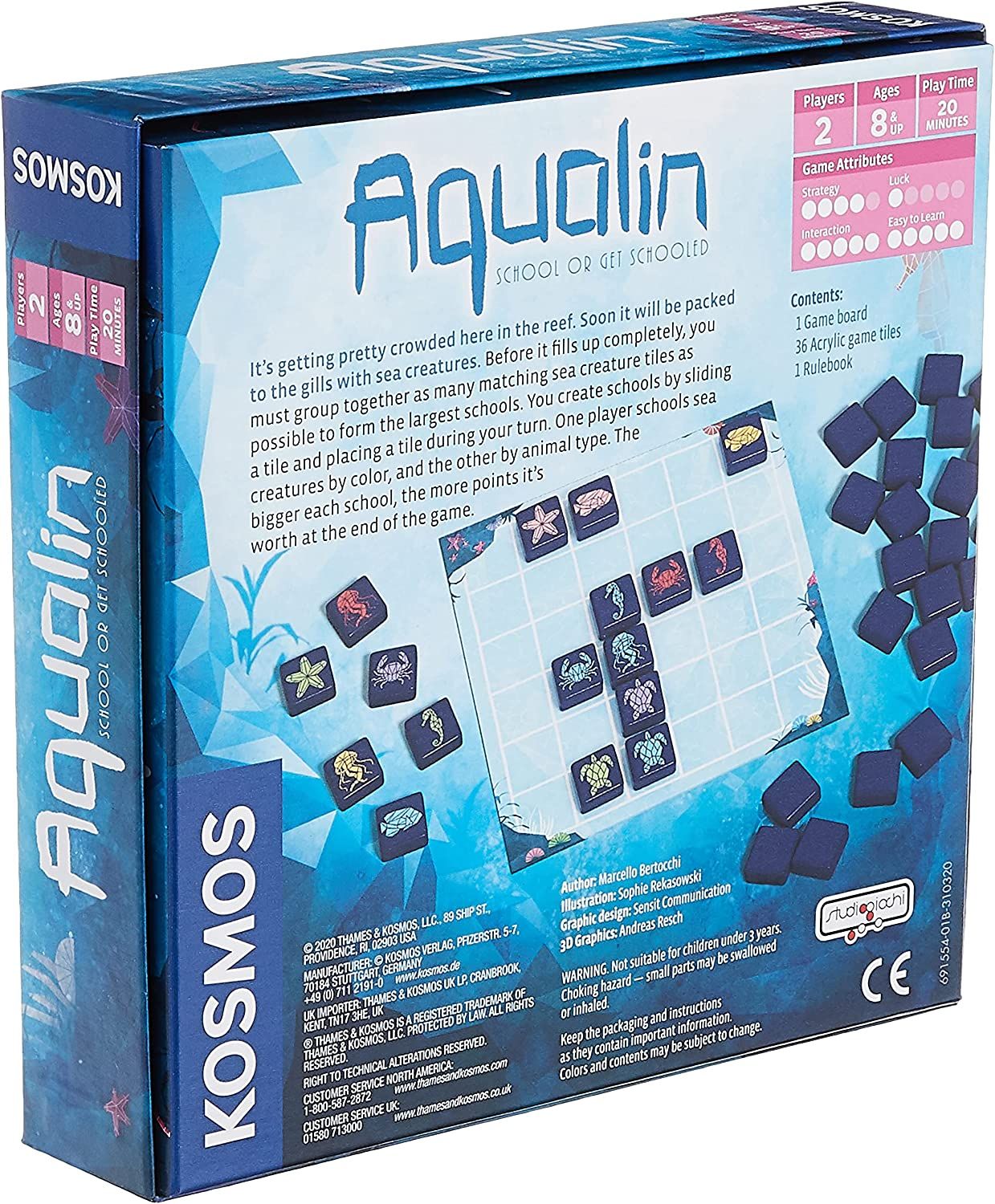
Aqualin
A 2020 nominee of the Golden Geek Best 2-Player Board Game award, Aqualin isn’t a classic but it’s also not exactly the new kid on the block. Because it’s simple, some may think of it as a children’s game like Guess Who? or Battleship, but it’s not really one. Board game enthusiasts may compare it to Azul because both feature high-quality tiles with beautiful designs. However, Aqualin and Azul have different gameplay rules and game themes. However, both rely heavily on their visual elements.
Aqualin players need to group matching colors or sea creature types in confrontational gameplay that’s can be fast-paced and often easy to spectate or participate in without playing. Because the rules are so easy to understand, Aqualin is perfect for impromptu games during family reunions, sleepovers, and other events where there could be a lot of downtime. Children and adults can be entertained by Aqualin games. Because a game only takes about 20 minutes, it’s never going to derail important event schedules. The creators even made a free printable scoring sheet you can download and use as many times as you want.
- Type of Game
- Strategy
- Age Recommendation
- 8 and up
- Game Duration
- 20 minutes
- Brand
- Thames & Kosmos
- What's Included
- Game board, tiles, rule book
- Production value is exceptional, with beautiful tiles similar to those of Azul
- Confrontational gameplay is easy to learn but difficult to master
- Compact size makes the game travel-ready
- Gameplay can be repetitive or similar, reducing replayabilty
Overall, Kahuna is a family-friendly game that’s ideal for board game nights. It’s a great addition to any board game shelf. Kahuna’s excellent visual design and high-quality wooden pieces add to the enjoyment of playing the game, too.
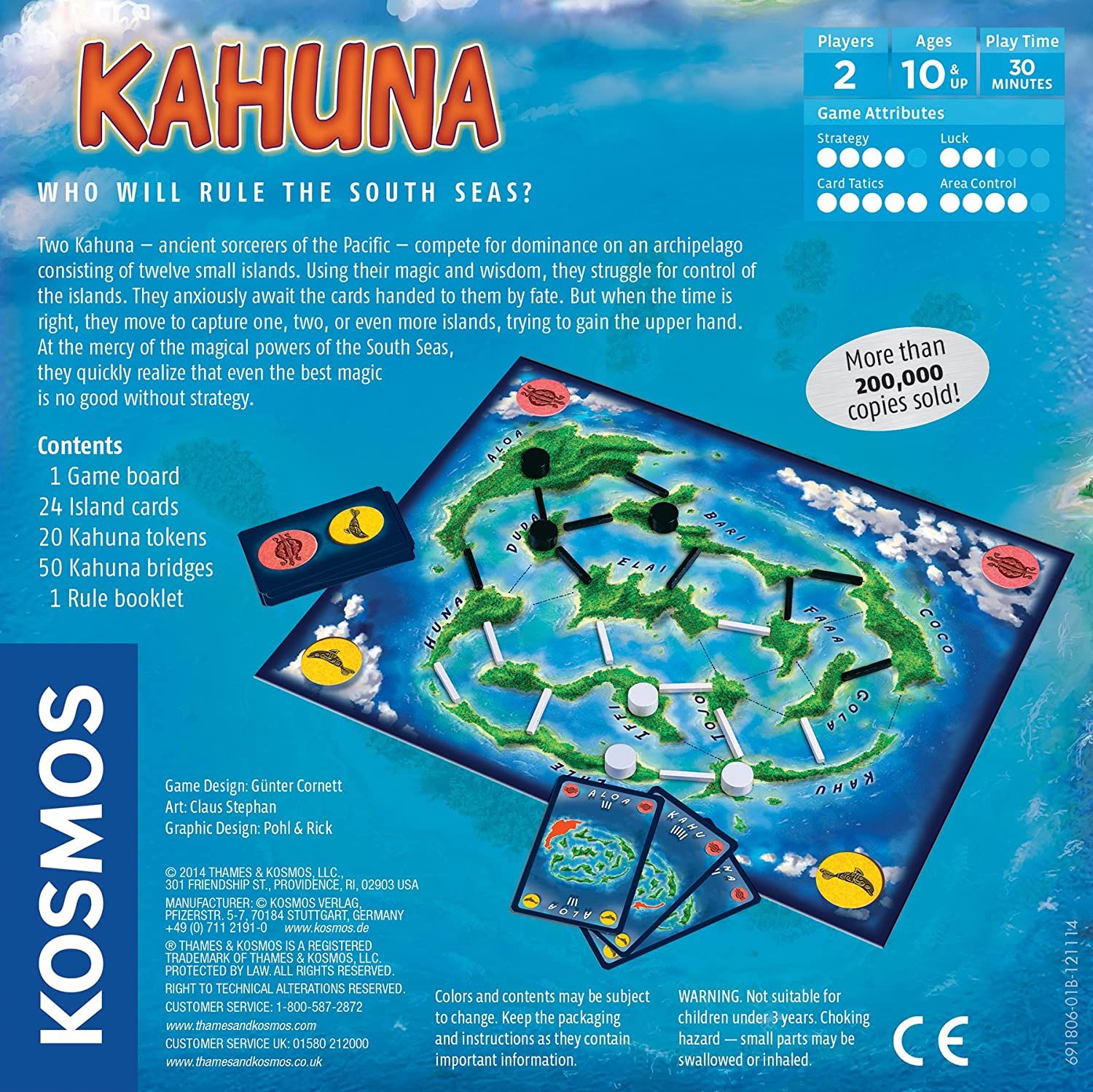
Kahuna
Do you know what “kahuna” means? It’s a Hawaiʻian word that refers to an expert in any field — including sorcerors. In North America, it’s also a slang word that refers to a very large wave or a person of importance. For example, a wealthy investor may be called a “big kahuna.”
In Kahuna, each player assumes a kahuna identity as they compete for dominance on a South sea archipelago consisting of 12 islands — the game is all about territorial control. While strategy is a huge part of the gameplay, the cards leave a lot of room for exploiting good luck. Kahuna is easy to learn and play, but mastering it is not so easy because luck affects how a game unfolds a lot.
Kahuna is quick to set up and take down, which makes it ideal for older children who want to bring their board games with them during play dates or school days. However, it has many small parts that can get lost — so it’s not really portable and travel-ready unless it’s always being used with parental supervision. Make sure, too, that pieces don’t get lost while playing indoors — especially if you have a child below three in your household. Some pieces can be choking hazards. Also, even though it’s mainly seen as a children’s game — like Battleship or Guess Who? — Kahuna can also be enjoyed by adult players.
- Type of Game
- Strategy
- Age Recommendation
- 10 and up
- Game Duration
- 30 minutes
- Brand
- Thames and Kosmos
- What's Included
- Board, cards, tokens, bridges, rule booklet
- Doesn?t need much surface area and the game is quick to set up and take down
- Gameplay involves territorial control but manages not to feel too much like Risk or Small World
- Encourages players to learn more about the South seas and the culture associated with the area
- Luck can play a big part in the game, which could turn off some players
Unlike most board games for two players, Blockbuster and Chill is a cooperative party game and not a strategy game. This makes the game more relaxing for everyone, and may even encourage spectating or participating in the discussion without actually being part of the game. Players don’t compete with each other and instead work together to reach a single goal. This game, along with the main game Blockbuster, is an excellent board game choice for people who like films. Blockbuster and Chill, in particular, is ideal for those who want to try board games but don’t like competing.
Blockbuster and Chill
While it’s not immediately apparent in any of the marketing text or the product details, Blockbuster and Chill functions as an expansion pack for main game, Blockbuster. With names like that, the connection should be obvious. Blockbuster and Chill can be played on its own cooperatively by two players, but it can also add four new genres to what’s already part of Blockbuster. However, Blockbuster isn’t a two-player game.
The family-friendly board game may also inspire some interesting conversations. Younger players may not even be familiar with the VHS tape, a reference of which is apparent in the game packaging. Adults may tell younger players about the VHS rental industry and how it was the time’s version of online streaming services. Many of the films included in the game are also very old, even for millennials and even Gen Xers. In cases like this, older adults may enjoy educating their family members about films from their time.
- Type of Game
- Board game
- Age Recommendation
- 14 years and up
- Game Duration
- 20 minutes
- Brand
- Big Potato
- Age recommendation makes the game not completely family-friendly
- Cooperative gameplay inspires trust and an increased connection between players
- Makes main game Blockbuster more replayable
- Does not come with the main game, which could be needed to play this expansion pack
The artwork for this new edition is by Vincent Dutrait. The typography is also bolder and easier to read than its counterpart in the first edition — however, it doesn’t come with the collectible metallic coin. People who can’t see well may want to buy this edition to increase their comfort in playing Jaipur.
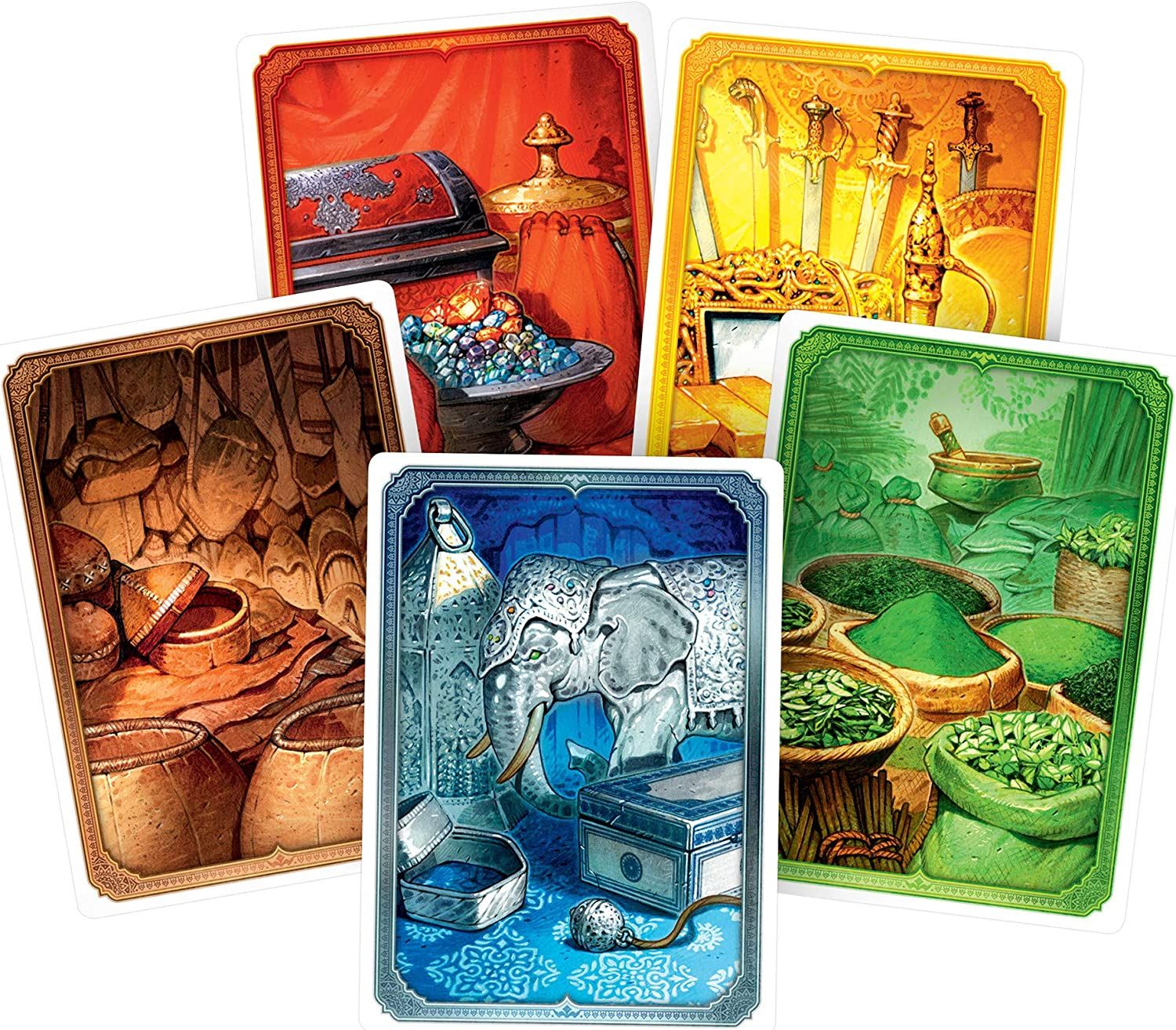
Jaipur
Board game enthusiasts may describe Jaipur as a combination of Splendor and Rummy, but that’s a reduction of everything that makes the two-player game well-loved. First of all, the gameplay’s structure is based on historical merchant trading in Jaipur. Players take on the roles of two powerful merchants seeking to become the Maharaja’s personal trader. The strategy involves collecting, exchanging, and selling goods — and keeping an eye on a camel herd — while competing for seals of excellence.
While Jaipur’s rules take time to master, the game itself is fast-paced and gameplay is heavily influenced by players’ luck and the risks they take with each move. Jaipur has also won many awards, including the Fairplay À la carte in 2010, the Juego del Año in 2014, and the Games Magazine Best New Family Card Game in 2011. It can seem too much to learn and master for someone who’s not a board game enthusiast, but Jaipur offers a great learning curve for players of all ages and backgrounds. In fact, games can take less than 30 minutes for veteran Jaipur players. In general, Jaipur is both accessible and replayable without being too simple.
- Type of Game
- Strategy
- Age Recommendation
- 10 and up
- Game Duration
- 30 minutes
- Brand
- Space Cowboys
- What's Included
- Cards, tokens
- Short games lead to enjoyable back-to-back sessions
- Small and sturdy box packaging is portable and travel-ready
- Game theme encourages players to learn more about India?s culture and history
- Back-to-back games can get tiring because the scoring system and token management can be fiddly
While Blokus Duo games can be fast-paced, players often take their time on their moves — similar to playing chess or Scrabble. However, when players take their time, they not only encourage healthy activity in their brain but also make it less possible to play back-to-back games that can get boring. Younger players may even enjoy playing with Blokus Duo pieces alone — in fact, this may be an ideal way for them to build a strategy for later two-player games. In this way, Blokus Duo can be a welcome addition to home activities — especially for young children who would otherwise by looking at a TV or tablet screen.
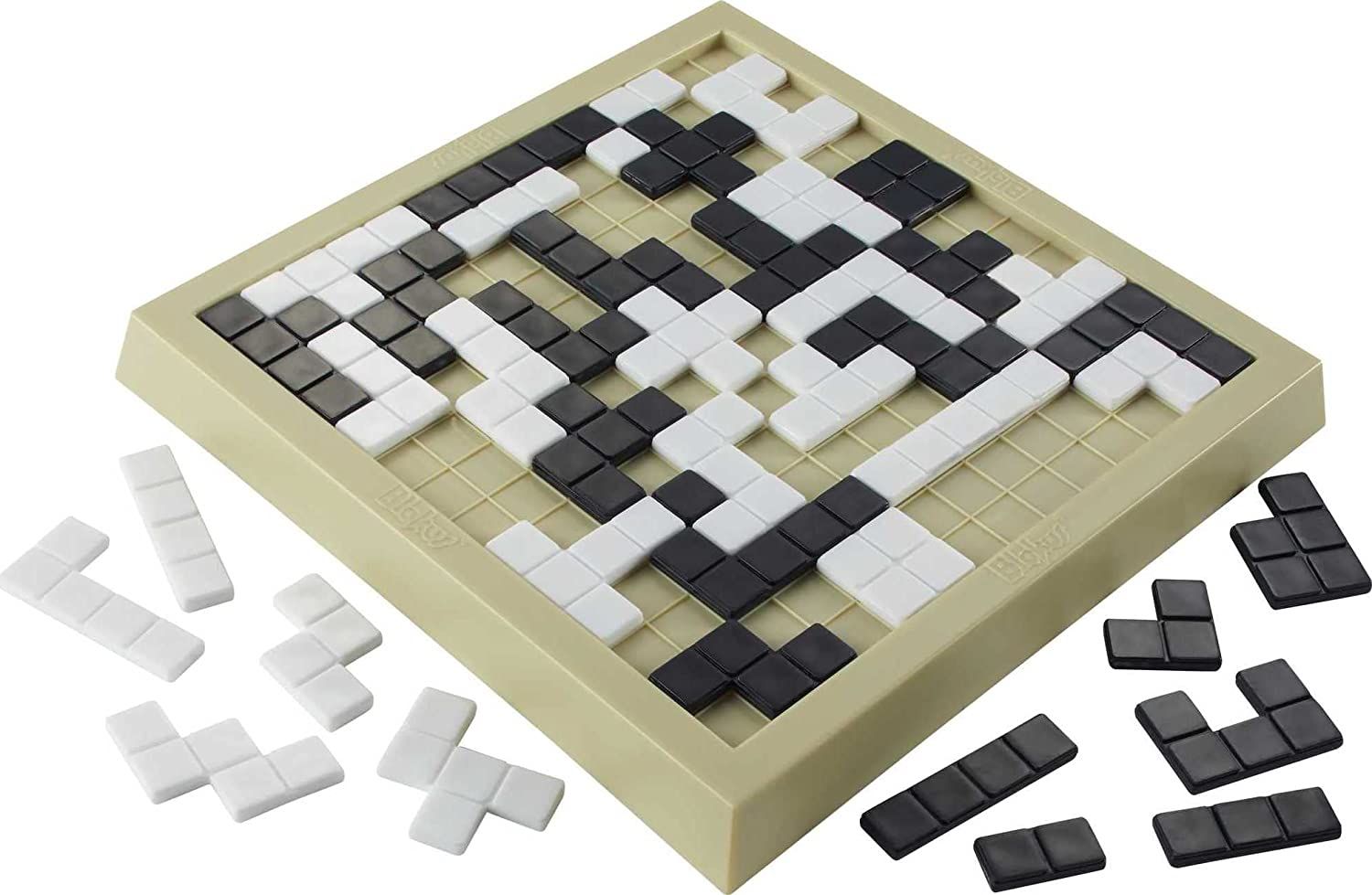
Blokus Duo
Like 7 Wonders Duel, Blokus Duo is simply a two-player version of an already well-known and well-loved board game. It’s not a game that was originally designed to be played by only two people. Compared to Blokus, Blokus Duo comes with only two sets of pieces instead of four. The game board is also smaller at 14X14 spaces instead of the main game’s 20X20 measurement.
The downsize makes Blokus Duo portable and easier to bring around while traveling. The rules are easy to understand and follow, too. The goal is to fit the most pieces on the game board, and the game ends when no more pieces can be placed down. The player with the lowest number of pieces left wins. Perfect for road trips or quick vacations, Blokus Duo can make traveling less dreary without taking up too much space in your luggage.
- Type of Game
- Strategy
- Age Recommendation
- 7 and up
- Game Duration
- 30 minutes
- Brand
- Mattel
- What's Included
- Board and playing tiles
- Black and white pieces make Blokus Duo accessible for people with sight disabilities
- Box packaging is small and travel-ready
- Easy to learn and play, even for young children
- Can get repetitive or boring when games are played back-to-back
Another element that makes Patchwork so family-friendly is the fact that losing often doesn’t hurt a player’s emotions. While the game is points-driven, a player’s focus is often split between wanting to win and wanting to create a beautiful quilt. As long as they thoroughly enjoy the quilt-making aspect, winning or losing could be a secondary concern.
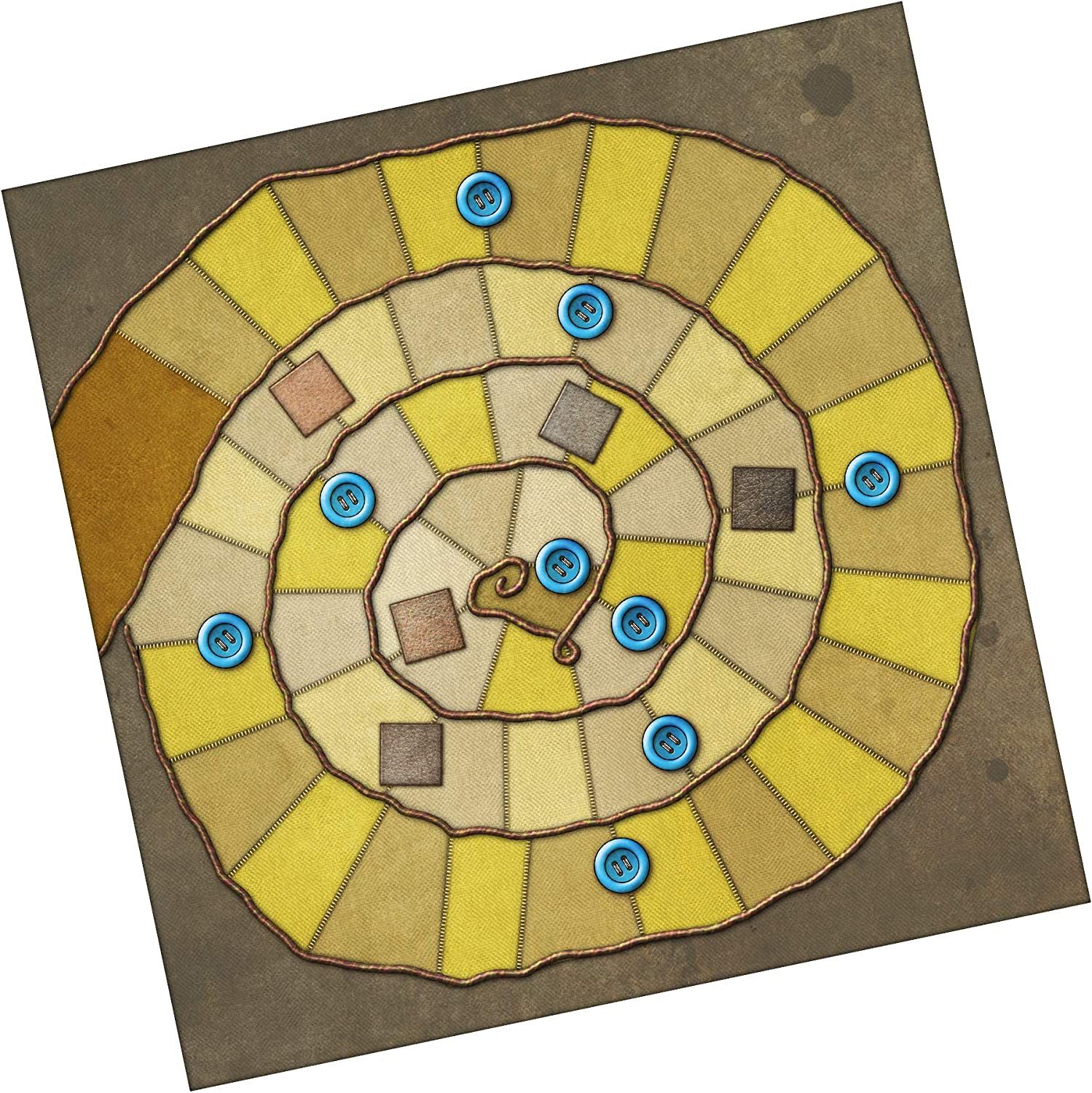
Patchwork
Board game enthusiasts may wonder why Patchwork is so popular and well-loved. After all, its Blokus-like gameplay isn’t very unique or unheard of. Dozens of other two-player games offer similar gameplay with better design and more strategic choices. However, what they may fail to consider is that visuals and familiarity matter. Patchwork delivers on both at high levels — which is why it’s won so many awards, such as the Golden Geek Best Abstract Board Game Winner in 2014 and the Årets Spel Best Family Game Winner in 2017.
While Patchwork does need a large surface area for play comfortably, it’s worth making space for the quilt-making aspect of the gameplay. While it’s not actually important for players to see everyone else’s quilts, it adds to the enjoyment of the players when it’s all visible on a surface. The game may also look more familiar than other games to people who aren’t typical board game enthusiasts — like old grandparents or young children — because the art does reference classic needlework. However, the age recommendation must always be followed. Patchwork includes pieces that may be a choking hazard for children under three years.
- Type of Game
- Strategy/Puzzle
- Age Recommendation
- 8 and up
- Game Duration
- 30 minutes
- Brand
- Lookout Games
- What's Included
- Game boards, markers, patches, tokens, tiles, and rule book
- Family-friendly game that?s easy to learn and play
- Quick gameplay can lead to enjoyable back-to-back games
- Beautiful art can make players feel like they?re doing actual patchwork
- Needs a pretty large surface area to play comfortably and properly
Apart from being a thrilling strategy game, 7 Wonders Duel can also be an inspiration for players to explore ancient history. In this way, it can actually be a teaching tool — especially for young players that may eventually encounter ancient history in school. The engaging gameplay can help make ancient history more interesting for those that typically find it boring to read or learn about the past.
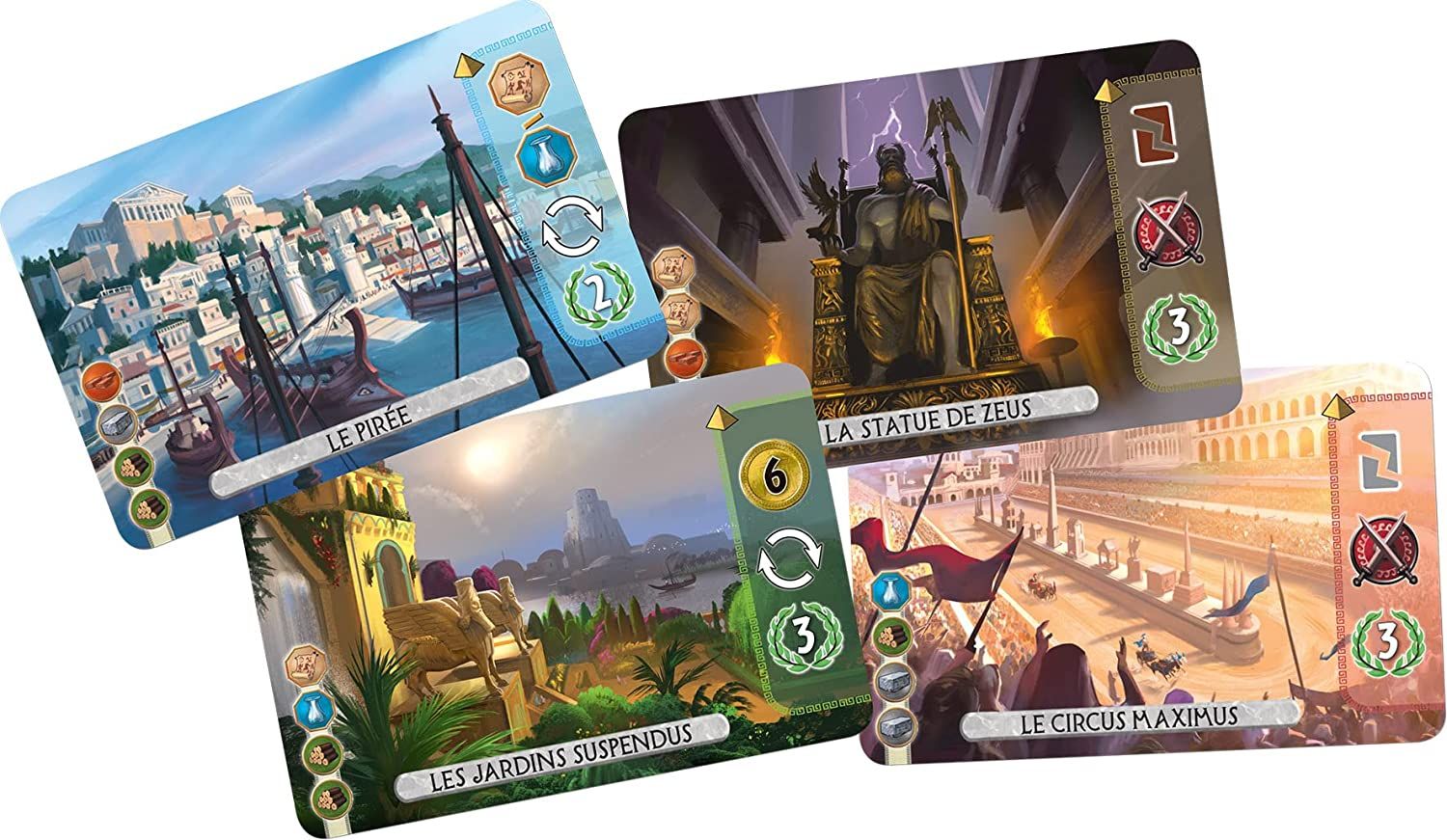
7 Wonders Duel
Did you know that the main game, 7 Wonders, can actually be a two-player game? However, the gameplay is tedious and rarely enjoyable. That’s why its creators came up with 7 Wonders Duel. This version of the main game smoothed over the gameplay for two players and made it more enjoyable while keeping the general outline of going through three rounds to develop a civilization and complete constructing wonders. It’s won multiple awards, too — such as the Swiss Gamers Award in 2015, the International Gamers Award for General Strategy: Two-players in 2016, and the Hra roku in 2017.
In 7 Wonders Duel, the two players draft cards from a display of face-down and face-up cards arranged at the start of a round. As in 7 Wonders, each card that each player acquires can be built, discarded for coins, or used to construct a wonder. A player can win 7 Wonders Duel in one of three different ways: having their military marker reach their opponent’s capital, acquiring any six of seven different scientific symbols, or having the most points at the end of the game.
- Type of Game
- Strategy
- Age Recommendation
- 10 and up
- Game Duration
- 30 minutes
- Brand
- Repos Production
- What's Included
- Game board, cards, playing pieces
- Multiple unique win conditions make for more enjoyable and less predictable games
- Two expansion packs ? sold separately ? allow for more replayability
- Better gameplay than the two-player rules for 7 Wonders
- Packaging insert doesn?t properly hold cards when you put them in protective plastic sleeves
Guess Who? is an ideal indoor activity for children because it encourages cognitive and sensory activity while keeping players glued to one area where the game’s set up. However, the number of separate pieces makes it not very portable. Parents and guardians should not allow Guess Who? to be played outdoors because the pieces may get lost or dirtied.
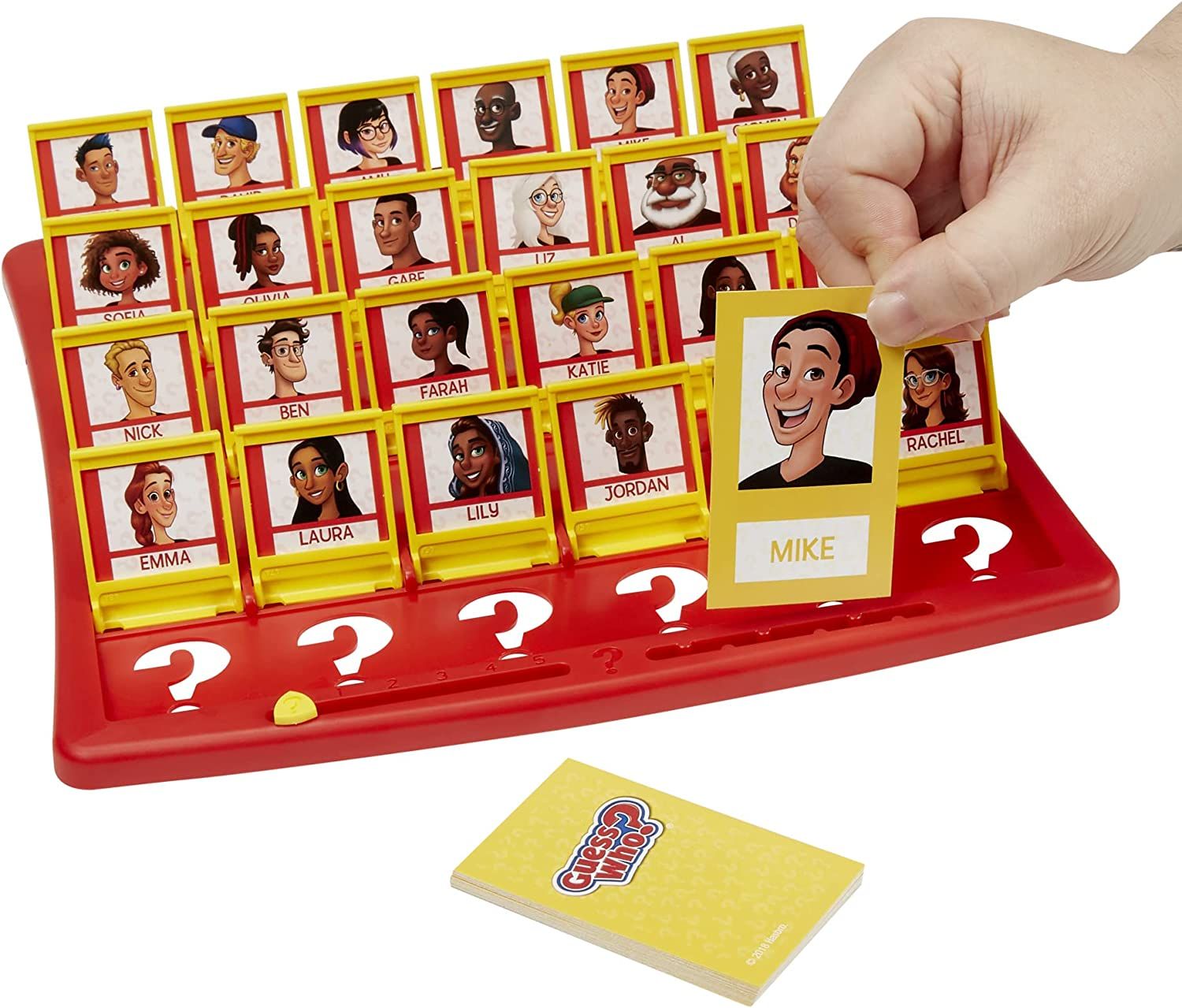
Guess Who?
Winning the Årets Spil Best Children's Game award in 1989, Guess Who? Is one of the classic children’s board games that have popped up in the last few decades. Like Battleship, it’s a game with previous adaptations — so it’s actually a lot older than most people realize. Grandparents these days may not be used to game pieces being made from plastic, but they often still remember how to play games like Guess Who? and Battleship.
This edition features a more diverse set of characters — including Ashley with the green hat, Chris with the glasses, and David with the red beard — although some consumers day that the game’s creator prioritized form over function when replacing the classic set of characters. Most of the new characters are varying shades of brown and don’t seem to have many unique and specific characteristics that younger players will recognize and use when formulating their questions to ask each other. No character looks overwhelmingly like an Asian or a Latinx. In fact, the game’s visual design may encourage children to focus unnecessarily on people’s race and skin color in real life, as they’re easily identifiable.
- Type of Game
- Cooperative
- Age Recommendation
- 6 and up
- Game Duration
- 20 minutes
- Brand
- Hasbro
- What's Included
- Game boards, cards, scorekeepers, instructions
- Indoor activity that teaches children how to tell people apart through their physical characteristics
- Diverse characters teach children to expect similar diversity in real life
- Classic game is familiar to older adults and makes for a great family bonding activity
- Although ethnically diverse, most of the characters look similar in this edition
Many consumers say that Mandala is an excellent two-player game because it doesn’t succumb to the common pitfall of having only one approach that guarantees a win almost every time. Again, like Jaipur, a player’s strategy can adapt and change to the specifics of each game. Board game enthusiasts may compare Mandala’s gameplay to the push and pull of Battleline or even simple poker, as it involves managing two hands at once and juggling several variables.
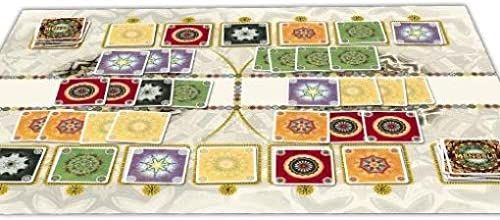
Mandala
Winning the MinD-Spielepreis 2 Players Game award in 2021, Mandala is a great new game but not a classic by any means. And while the game mechanics are easy to learn, mastering them takes time and practice. It’s a good thing that the game is beautiful and activates the creative part of the mind along with the strategic part. However, if children are playing the game, they may need parental supervision so they don’t spill beverages on or otherwise dirty the cards. Unfortunately, Mandala’s cards don’t fit into the typical protective plastic sleeves that many board game enthusiasts use.
Like Jaipur, Mandala is more than simply a strategy game for two players. It’s also an introduction to the culture and history of a part of the world that some players may not be familiar with. However, mandalas may be familiar to people whose hobby is coloring — as mandalas are also typical shapes in coloring books. In fact, color has a lot to do with Mandala’s gameplay. As a result, people who are color-blind may find it difficult to play the game.
- Type of Game
- Strategy
- Age Recommendation
- 10 and up
- Game Duration
- 30 minutes
- Brand
- Lookout Games
- What's Included
- Play mat, cards, rule book
- Beautiful art combined with the mandala-creating aspect of the gameplay increases enjoyment of players
- Gameplay can feel cooperative because players share central mountains as they lay down cards into their own fields
- Encourages players to learn more about Eastern religions and mandalas
- Cards don?t fit into typical protective plastic sleeves
Another great element of Battleship is that older adults often know how to play it, again similar to chess or checkers. This makes the game a great family bonding activity, especially among grandparents and grandchildren — however, the small parts may be difficult for older grandparents to handle, and younger grandchildren may choke on them. That’s why it’s always important to follow a game’s age recommendations. Children younger than seven years may also not have the attention span to dedicate 15 minutes to a single game.
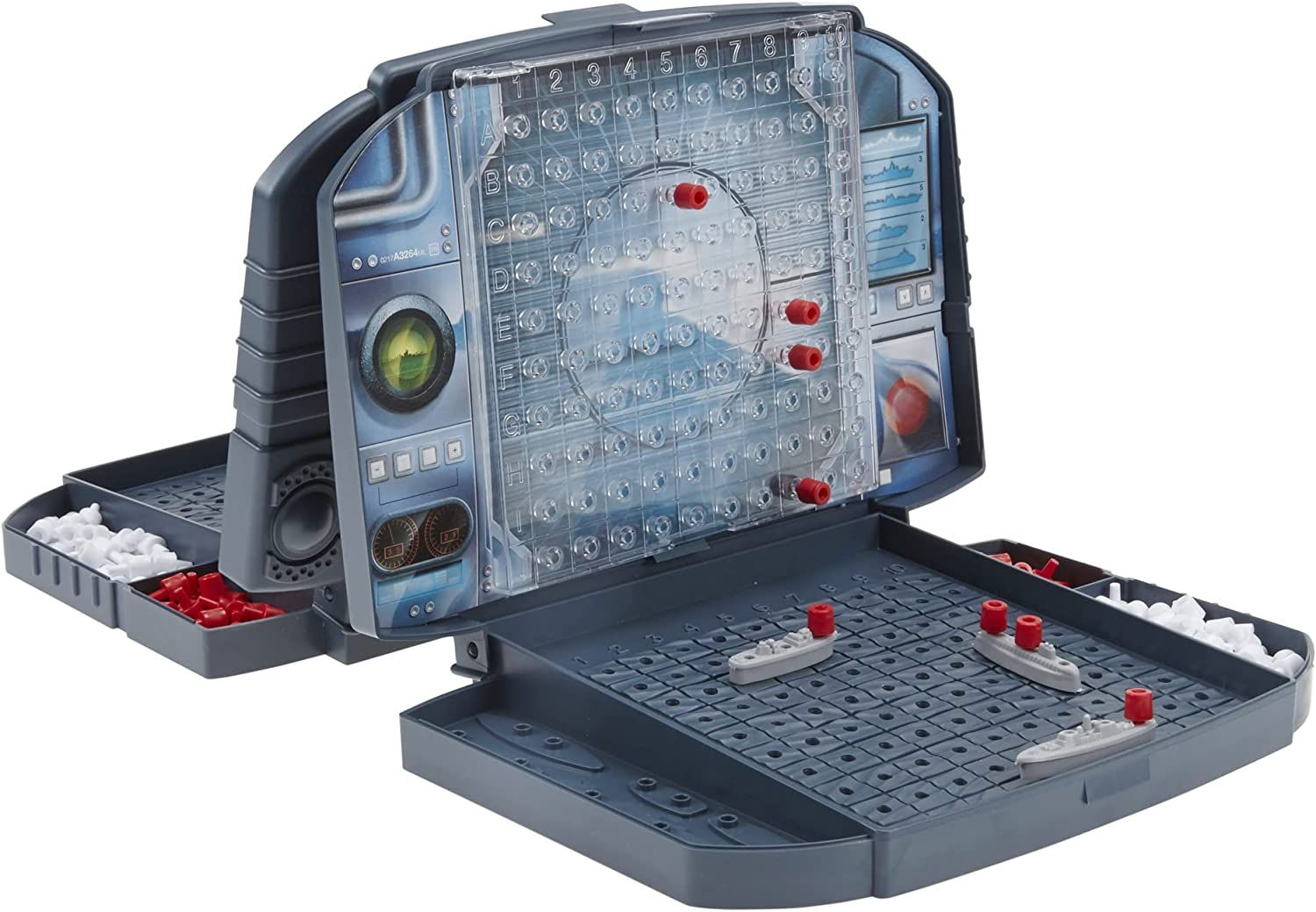
Battleship
Did you know that Battleship was originally a public-domain game? It was originally a pencil-and-paper affair that was adapted and then published by many companies that gave it different names, such as Broadsides, Convoy, Salvo, and Wings. In 1933, The Strathmore Co. published Combat, The Battleship Game — the first instance of the familiar name. In 1967, Milton Bradley published a board game adaptation of the public-domain game with specifications that most people will recognize — such as plastic grids with holes and pegs. In 2008, Hasbro Gaming adapted the game and published it as Battleship.
Like classic designs of chess or checkers, Battleship’s battle cases are meant to hold the smaller parts of the game. This storage situation also makes games like this portable, and for Battleship, it also makes long-distance games possible. Players can each take a battle case with them and simply call or send online messages to find out each other’s moves. Or, they can play live but remotely in a video call.
- Type of Game
- Strategy
- Age Recommendation
- 7 and up
- Game Duration
- 30 minutes
- Brand
- Hasbro
- What's Included
- Two battle cases, ships, pegs, instructions
- Classic and wholesome two-player game that can be enjoyed by people of all ages
- Battle cases are portable and travel-ready
- Long-distance games are possible by sending moves through phone or online messaging
- Small parts can be a choking hazard for children under 3 years
Do Modern Board Games for Two Players Measure Up to the Classics?
In fact, most classic board games are often for two players only. Games like chess and shogi are like Battleship and Blokus Duo, with only two sets of pieces and specific game boards that only support two players. In this aspect, modern board games and classic board games are mostly the same.
However, the nostalgia that’s built into playing classic board games is difficult to measure up to — there’s always going to be something about playing checkers or mancala that’s going to be more satisfying than trying out a new game like Aqualin or Kahuna. This nostalgia is also what may make classic board games more preferable for older adults who don’t want to waste time learning new rules of new games, and therefore more preferable for family game nights.
Can Some Two-Player Board Games Possibly Include More Players?
In general, if a board game is marketed as a two-player game, it can’t be played by more than two players. There are some exceptions, of course. For example, Blockbuster and Chill is a two-player board game but could be combined with the main game, Blockbuster, to create a party game for multiple players. However, the vast majority of branded two-player board games, which includes many of those in this guide, will not be able to be played by more than two players. Although, spectation is always a possibility! Of course, being a spectator is more fun with some games than others. For instance, Risk would be a much more fun game to spectate over compared to Codenames: Duet, which involves a lot of silence.
There’s also the implementation of house or alternate rules to allow for more than two players. An easy way to do this, if there’s an even number of players, is to create two teams and have each team move as one. The only problem with this change in gameplay is the potentially long turns as team members take the time to consult each other before moving their pieces. Adding a turn time period and using a timer would help mitigate this issue.
FAQ
Q: Is Dungeons & Dragons good for two players?
Setting aside the fact that Dungeons & Dragons is a tabletop game, rather than a board game, it is not ideal for two players. As one player has to be the dungeon master constructing the challenges and environment for the players, doing so for one player might require a more novice approach to world-building, which wouldn't be as fun as the comradery that can be had with four or more players.
Q: How long should a board game last?
The duration of any given game will depend on the game in question. However, a good rule of thumb is that a particular game lasts anywhere from 30-60 minutes. Any shorter and it may not have been worth playing, and any longer, and it starts to drag or it will feel necessary to continue at a later date when the flow of the action will have been halted indefinitely.
Q: Why isn't traditional Monopoly suitable for two players?
Simply put, the original Monopoly has too many moving parts and is too complex to play with just two players. Between the pace of buying up properties and the randomness of which spaces you land on, the game could last quite a while if limited to only two players. Fortunately, there are alternatives.
Q: Can Risk be played with two players?
Although traditionally played by more than two players, Risk can indeed be played by two players. But like anything else, it requires some changing of the rules, including starting with more armies.
Q: What card games are good for two players?
While board games are often more in-depth and gimmicky, there are some great card games fit for two players. For instance, Uno is always a solid time for two players. And further, solitaire and spider solitaire can also provide tons of entertainment for two.
